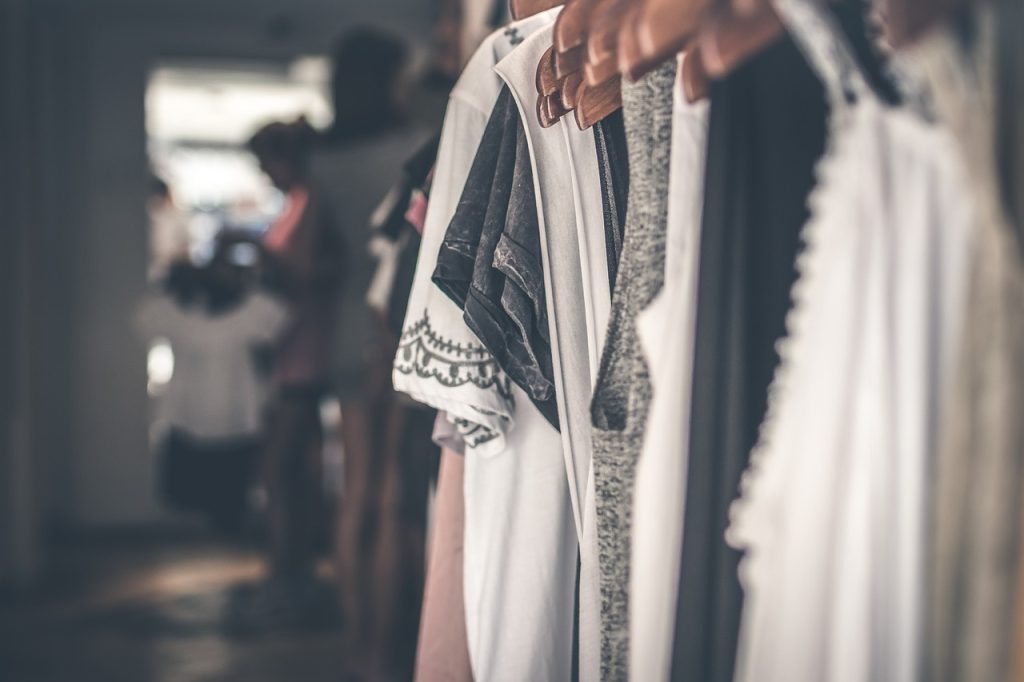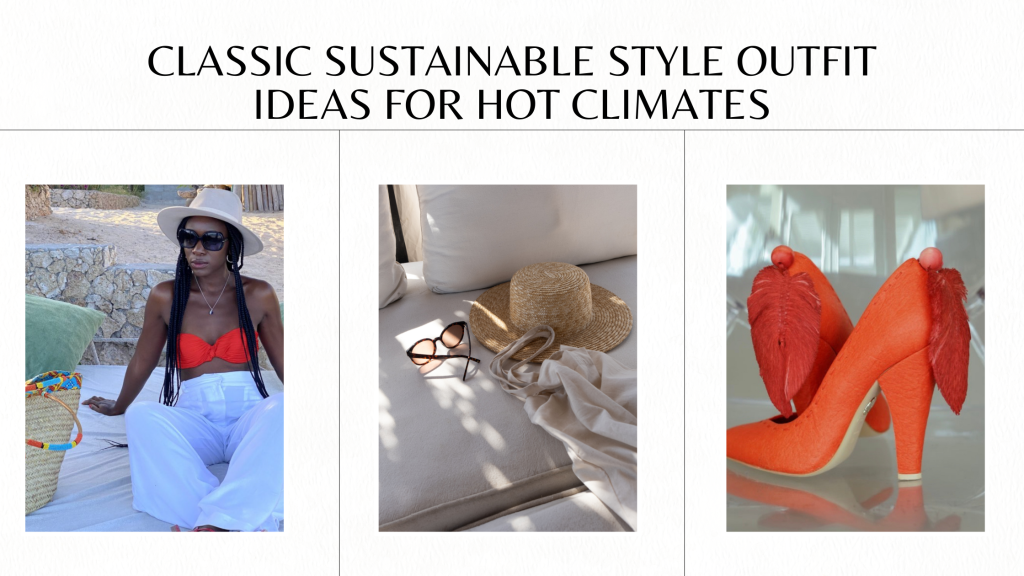It’s been a year now since I moved from the cold Czech Republic back to my warm country Kenya. Moving back to Kenya, I tried living in the capital city but was in need of a slow life. This quest for slow life took me straight to one of the most beautiful and slowest places I’ve seen ever since I started travelling the world. Kilifi County is on the Kenyan coast. I tried living in Watamu but because of work and kids’ school, I moved to Malindi. The place is quite warm and with average high temperature ranging from 31°C (88°F) to 33°C (91°F). It took me over a year to slowly shift from my warm wardrobe to tropical clothes. I have tips on how to Stay Chic and Comfortable in any hot climate.

Remember, sustainable style in hot climates is all about being comfortable, embracing eco-friendly fabrics that aren’t harmful to your skin, and making conscious choices that align with your personal style.
When it comes to maintaining a chic sustainable style in hot climates, here are some tips to consider:
Don’t throw away your clothes
If you think you have moved for an extended period of time, try not to throw away your warm clothes. Chances are that they will end up in landfills. Instead, give them out to friends and attend swap events where you can swap your warm climate clothes with light ones. I still travel quite often to Europe, I so haven’t had the need to get rid of warm clothes.

Buying new clothes?
Go for lightweight, breathable fabrics made from sustainable materials such as hemp, organic cotton, linen, or bamboo. These fabrics are not only eco-friendly but also help keep you cool and comfortable in hot weather. Try avoiding synthetic fabrics that don’t breathe well like nylon and polyester. These fabrics trap heat and moisture against the skin and can make you feel sweaty, itchy, and uncomfortable in warm climates.

Give those flowy long Silhouettes try
I love shorts and don’t mind tight clothes but these are no longer my day-to-day outfits because I realized that the skin needs to breathe. Embrace loose and flowy silhouettes that allow air circulation and keep you cool. Buy maxi skirts/dresses, wide-leg pants, and billowy tops made from breathable fabrics.
Embrace Light Colors
Ever wondered why there are lots of light colours sold in warm months? Light-colored clothes reflect sunlight which helps you stay cooler compared to dark colours. Fill your wardrobe with whites, pastels, and soft neutrals. I try to avoid dark colors that absorb heat and keep these for my travel days.
Layer with Sustainable Exteriors
For when the evenings cool down, Invest in lightweight, sustainable outerwear options like linen blazers or organic cotton jackets. These versatile pieces can elevate your outfit while keeping it comfortable.



Mix and Match a few key pieces
Secondhand and vintage finds mixed with your sustainable new fabrics can cleat a beautiful blend. Sometimes I splurge and get myself that skirt made from help seeds and sometimes you’ll find me in thrift markets scavenging for the lightly used linen clothes. Buying secondhand is not only a sustainable way to shop, but you’ll also discover one-of-a-kind items that add a touch of individuality to your style.
Want to be colorful and vibrant?
Classic chic style doesn’t necessarily mean boring. If you love colors, throw in some lightweight scarf that you can wear as a bralette, as a headscarf, or tie to your handbag for a pop of color. Hats can add a perfect pop of color to your outfit. Personally, fedora hats have become my favorite because of their wide brim that’s practical because they protect your whole face.
You could also wear some very lightweight colourful summer shirts made from organic cotton.

Statement accessories
Because you’ll be wearing a lot of light-colored clothes, look for those statement necklaces or earrings to add some personality to your outfit.



Let’s talk Swimwear because you’ll need them
Try finding swimwear made from ECONYL (a regenerated nylon fabric made from discarded fishing nets, fabric scraps, and other nylon waste.) or Repreve (a recycled polyester fabric created from post-consumer plastic bottles) These fabrics contribute to reducing waste in our oceans, are versatile, offers excellent stretch, durability, and color retention properties.

Finally, don’t forget your Natural Fibers for Footwear
I had to learn this the hard way after my feet burnt from rough materials. Avoid heavy leather, rubber, and PVC (Polyvinyl Chloride) these materials are known for their poor breathability, which can lead to trapped moisture and an uncomfortable wearing experience. Choose footwear made from natural fibers like jute, raffia, apple leather, Piñatex, bamboo, or cork. These materials are not only breathable but also lend a summery and sustainable vibe to your outfit.

Hey, Belinda! Miss you on Instagram! I hope that you are making the conscious choice to step back for kids/life/mental health, and not because of some awful Meta glitch, as happens so often. If that is the case, I hope it is soon resolved! Please let me know if there is anything you need, I love your content and have always wanted to collaborate. Sending love from Colorado
Hello, Thank you so much for checkin on me. I was transitioning the page to Sustainable Fashion Talks hence the big glitch but now I am back. I wish I could access you easily because I am currently filming One on One episodes with conscious brand owners that will start airing in July.
Hugs to you.